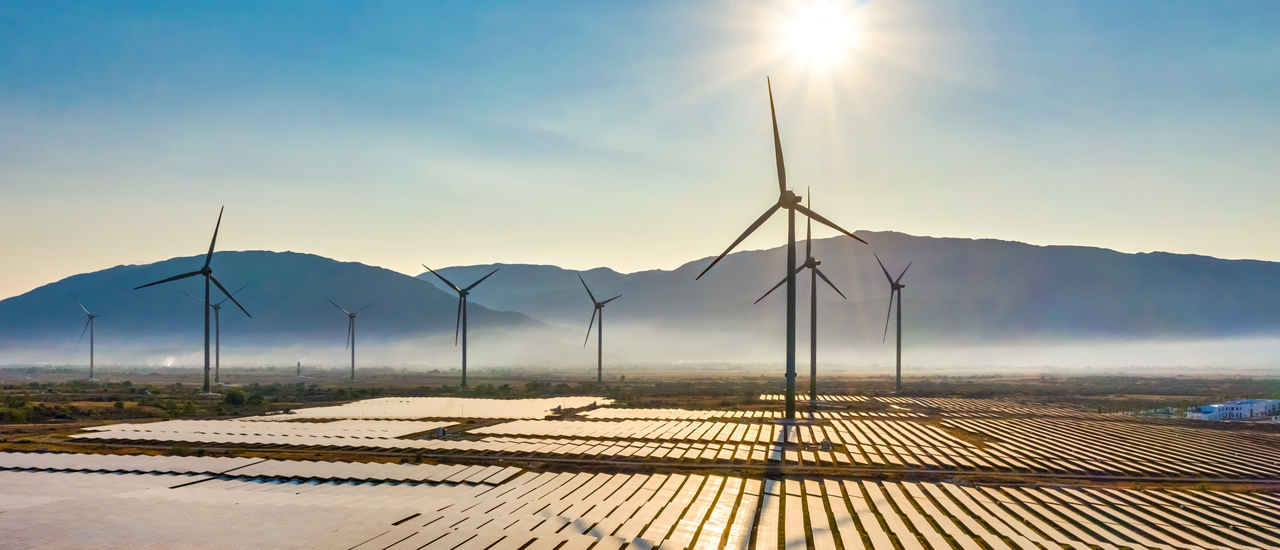
Investing in Renewable Energy in Vietnam
Although not without challenges, Vietnam’s natural resources paired with its sustainability goals means the country is heading towards global leadership in renewable energy, and provides possible opportunities for investors.
According to a report by Electricity of Vietnam (EVN), in the first six months of 2021 the total amount of electricity produced (by both sustainable and non-sustainable means) in Vietnam reached 128.51 billion kWh – an increase of 7.4% when compared with the same period in 2020. Renewable energy (wind power, solar power, biomass power) reached 14.69 billion kWh during this time and accounted for 11.4% of the total amount.
Under Plan VIII drafted by the Ministry of Industry and Trade (MOIT), by 2030 the total expected installed capacity of the system will reach 130,370-143,839 MW. Of this, renewable energy will account for 24.3-25.7%, equivalent to 65.6-79.8 billion kWh. This is an increase of approximately five times the existing level. [1]
There are pros and cons to investing in this sector:
Advantages of renewable energy investment in Vietnam
- Suitable natural conditions
- Over 2,500 total hours of high sunshine hours per year.
- The intensity of solar radiation is stable over four seasons.
- The coastline is more than 3,000 km long.
- The average annual wind speed is 6m/s
- Legal policy
- Plan VIII prioritizes the development of water-based solar power, rooftop solar power, and offshore wind power.
- There are no restrictions on the capital ownership ratio of foreign investors.
- The Feed-in Tariff (FIT) applies, which is beneficial for investors.
- Under the impact of the Comprehensive and Progressive Agreement for Trans-Pacific (CPTPP), the European Union – Vietnam Free Trade Agreement (EVFTA) and the Paris Agreement on climate change, Vietnam has been forced to cut down on coal-fired power plants and replace them with clean energy sources.
- Capacity of Vietnamese enterprises
- Local enterprises have cooperated with and received large investment capital from many experienced global energy corporations such as Ørsted (Denmark), Hitachi (Japan), and Enterprise Energy (Singapore).
Disadvantages of renewable energy investment in Vietnam
- Private enterprises have not been allowed to transmit and distribute, and can only participate in the construction of power infrastructure and production.
Current Projects in Vietnam
There are various projects currently planned, in progress or already operating across the country:
| No. | Name | Capacity | Investment capital (billion VND) | Location | Status |
| 1. | Ea Nam | 400 MW | 16.500 | Ea H’leo, Dak Lak | In progress |
| 2. | Tan Thuan (offshore) | 75 MW | 2.950 | Dam Doi, Ca Mau | In progress |
| 3. | Trung Nam | 151,95 MW | 4.000 | Thuan Bac, Ninh Thuan | In operation |
| 4. | La Gan (offshore) | 3500 MW | 270.000 | Binh Thuan | Not implemented yet |
| 5. | Ke Ga (offshore) | 3400 MW | 270.000 | Ham Thuan Nam, Binh Thuan | Not implemented yet |
| 6. | Tan Phu Dong | 150 MW | 4.500 | Go Cong Dong, Tien Giang | In progress |
| 7. | Xuan Thien Ea Sup | 600 MW | 20.000 | Ea Sup, Dak Lak | In operation |
| 8. | CMX Renewable Energy | 168 MWp | 3.700 | Ninh Son, Ninh Thuan | In progress |
| 9. | Hoa Hoi | 257 MWp | 5.000 | Phu Hoa, Phu Yen | In operation |
As demand for renewable energy sources grows, and the Vietnam Government’s commitment to clean energy projects continues, investors should watch this space for opportunities and incentives.
[1] Plan VIII, also known as the National Power Development Plan for the period of 2021 – 2030, with a vision to 2045 drafted by the Ministry of Industry and Trade is in the process of being approved by the Vietnam’s Government.
For further information please contact:
Vu Manh Quynh, Managing Partner
Email: quynh.vu@ecovislaw.vn
Tran Dinh Chien, Partner
Email: chien.tran@oclaw.vn
Contact us:
Vu Manh Quynh
ECOVIS Vietnam Law
Unit SAV1.02.11, Tower 1, The Sun Avenue,28 Mai Chi Tho Street, Thu Duc City
71100 Ho Chi Minh City
Phone: +84 898 120 121
www.ecovis.com/vietnam/law


